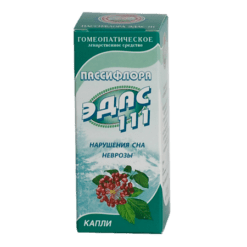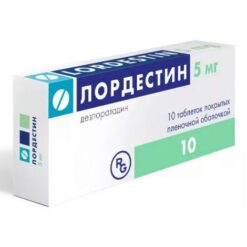-
×


-
×


-
×


Subtotal: €29.03






Subtotal: €29.03






Subtotal: €29.03
Suprastinex has antihistamine, anti-allergic action.
Pharmacodynamics
The enantiomer of cetirizine; competitive histamine antagonist; blocks H1-histamine receptors, affinity for which is 2 times higher than for cetirizine. It influences the histamine-dependent stage of allergic reactions; it reduces the migration of eosinophils, reduces vascular permeability, and limits the release of inflammatory mediators. It prevents and facilitates the development of allergic reactions, has antiexudative, antipruritic effects; it has practically no anticholinergic and antiserotoninergic action. In therapeutic doses has almost no sedative effect.
The action begins 12 minutes after a single dose in 50% of patients, after 1 hour in 95% of patients and lasts for 24 hours.
Pharmacokinetics
The pharmacokinetics is linear. It is quickly absorbed when administered orally; eating has no effect on completeness of absorption, but reduces its speed. Bioavailability is 100%. Time to maximum concentration (TCmax) – 0.9 hours, maximum concentration (Stah) – 207 ng/ml. Volume of distribution – 0.4 l/kg. Binding to plasma proteins -90%. Less than 14% of the drug is metabolized in the liver through O-dealkylation to form pharmacologically inactive metabolite.
Half-life (T1/2) is 7-10 hours. Total clearance is 0.63 ml/min/kg. It is completely eliminated from the body within 96 hours. Excreted by the kidneys (85.4%). In renal insufficiency (creatinine clearance less than 40 ml/min) clearance is decreased (in patients undergoing hemodialysis – by 80%), T1/2 is prolonged. Less than 10% is removed during hemodialysis. It penetrates into breast milk.
Symptomatic treatment of the following conditions:
year-round (persistent) and seasonal allergic rhinitis and conjunctivitis (itching, sneezing, rhinorrhea, lacrimation, conjunctival hyperemia);
hay fever (hay fever);
urticaria, incl. chronic idiopathic urticaria;
Quincke’s edema;
allergic dermatoses, accompanied by itching and rashes.
Pharmacotherapeutic group: antiallergic agent – H1-histamine receptor blocker
ATX code: R06AE09
Pharmacological properties
Pharmacodynamics
Enantiomer of cetirizine; competitive histamine antagonist; blocks H1-histamine receptors, the affinity for which is 2 times higher than that of cetirizine. Affects the histamine-dependent stage of allergic reactions; reduces the migration of eosinophils, reduces vascular permeability, limits the release of inflammatory mediators.
Prevents the development and facilitates the course of allergic reactions, has an antiexudative and antipruritic effect; has virtually no anticholinergic and antiserotonergic effects. In therapeutic doses it has virtually no sedative effect.
The action begins 12 minutes after taking a single dose in 50% of patients, after 1 hour in 95%, and continues for 24 hours.
Pharmacokinetics
Pharmacokinetics is linear. Rapidly absorbed when taken orally; food intake does not affect the completeness of absorption, but reduces its speed. Bioavailability – 100%. Time to reach maximum concentration (TCmax) – 0.9 hours, maximum concentration (Cmax) – 207 ng/ml.
Volume of distribution – 0.4 l/kg. Plasma protein binding -90%. Less than 14% of the drug is metabolized in the liver by O-dealkylation to form a pharmacologically inactive metabolite.
Half-life (T1/2) – 7-10 hours. Total clearance – 0.63 ml/min/kg. Completely eliminated from the body within 96 hours. Excreted by the kidneys (85.4%). In case of renal failure (creatinine clearance less than 40 ml/min), clearance decreases (in patients on hemodialysis – by 80%), T1/2 is prolonged. Less than 10% is removed during hemodialysis. Passes into breast milk.
Suprastinex film-coated tablets contain lactose and should not be administered to patients with lactose intolerance, hereditary lactase deficiency or glucose-galactose malabsorption syndrome.
Impact on the ability to drive a car or perform work that requires increased speed of physical and mental reactions.
During the treatment period, it is recommended to refrain from engaging in potentially hazardous activities that require increased concentration and speed of psychomotor reactions.
Levocetirizine
1 film-coated tablet contains:
active ingredient: levocetirizine dihydrochloride 5 mg (equivalent to 4.21 mg levocetirizine),
excipients:
microcrystalline silicon cellulose Prosolv HD90 (MCC – 98%, colloidal anhydrous silicon dioxide – 2%) – 40.4 mg;
lactose monohydrate – 37.9 mg;
low-substituted hyprolose (L-HPC11) – 10 mg;
magnesium stearate – 1.7 mg,
shell: Opadry II 33G28523 white (hypromellose 2910 – 40%, titanium dioxide – 25%, lactose monohydrate – 21%, macrogol 3350 – 8%, triacetin – 6%) – 5 mg
Animal studies have shown no direct or indirect harmful effects on pregnancy, embryonic or fetal development, childbirth or postnatal development. There have been no controlled clinical studies on the safety of the drug in pregnant women, so the drug should not be prescribed during pregnancy.
Levocetirizine is excreted in breast milk, so if it is necessary to take it during lactation, breastfeeding should be stopped while taking the drug.
Hypersensitivity to the active substance (including piperazine derivatives) or any auxiliary component of the drug;
severe renal failure (creatinine Cl less than 10 ml/min);
children under 6 years of age (for film-coated tablets) and under 2 years of age (for oral drops) – due to the lack of clinical data;
pregnancy and lactation;
lactose intolerance, hereditary lactase deficiency or glucose-galactose malabsorption syndrome – for film-coated tablets.
With caution: chronic renal failure, old age (possibly decreased glomerular filtration).
The parameters used below for the frequency of side effects are defined as follows: very often – >1/10; often – >1/100 and 1/1000 and 1/10000 and <1/1000; very rarely - <1/10000.
From the immune system: very rarely – allergic reactions, incl. anaphylaxis.
Metabolic: very rarely – weight gain.
From the central and peripheral nervous system: often – drowsiness, headache, increased fatigue; infrequently – asthenia; rarely – migraine, dizziness.
From the respiratory system: very rarely – dyspnea.
From the gastrointestinal tract: often – dry mouth; infrequently – abdominal pain; very rarely – nausea, dyspepsia.
From the subcutaneous fat: very rarely – angioedema, itching, rash, urticaria.
From laboratory parameters: very rarely – changes in liver function tests.
If any side effects occur, incl. not specified in the instructions, you must consult a doctor.
Interaction studies of levocetirizine have shown no clinically significant interactions with pseudoephedrine, cimetidine, ketoconazole, erythromycin, azithromycin, glipizide and diazepam. Combined use with macrolides or ketoconazole did not cause significant changes in the ECG.
Theophylline (at a dose of 400 mg/day) reduces the total clearance of levocetirizine by 16%, while the kinetics of theophylline does not change.
Levocetirizine does not enhance the effects of alcohol, however, in sensitive patients, concomitant use of levocetirizine with alcohol or other CNS depressants may cause CNS effects.
Symptoms: in adults they manifest as drowsiness, in children – agitation, anxiety, which are replaced by drowsiness.
Treatment: it is necessary to rinse the stomach and consult a doctor. There is no specific antidote. Symptomatic and supportive therapy is recommended. Hemodialysis is ineffective.
At a temperature not exceeding 30 °C
5 years
EGIS, Hungary
| Shelf life | 5 years |
|---|---|
| Conditions of storage | At a temperature not exceeding 30 °C |
| Manufacturer | EGIS, Hungary |
| Medication form | pills |
| Brand | EGIS |
Buy Suprastinex, 5 mg 14 pcs with delivery to USA, UK, Europe and over 120 other countries.